I have been quite taken with Greek and Roman mythology for most of my life. My obsession started when my parents gave me a copy of Bullfinch’s Mythology for Christmas when I was in middle school. (I also got a very early start on my nerd street cred.) In high school, I loved reading Romeo & Juliet because it was inspired by the far older myth of Pyramus and Thisbe. In college, the literature of the British Romantic period was my favorite because of its many references to the old Grecian stories. Most people dream of seeing Starry Night and Mona Lisa, but I fangirled over Psyche Revived by Cupid’s Kiss and Winged Victory of Samothrace. Ovid’s Metamorphoses is still one of my favorite books. (And while we’re at it, Hercules is my favorite Disney movie. That counts, right?) I think myths and legends are one of the most fascinating ways to learn about a place’s culture, but for whatever reason, Greece’s stories have always held a special place in my heart.
Because of this, one of the highlights of my travels was going to Delos, a tiny Grecian island in the Cyclades about two miles off the coast of Mykonos. Delos is about as steeped in mythology as you can get. It’s considered one of the most important places of Greek mythology; not only was it home to the Delos Synagogue (which is the oldest known synagogue in the world), but it was also famed as the birthplace of the twins Apollo and Artemis, the Greek god and goddess of the sun and moon, respectively.

If nothing else, it’s got a damn fine view of the Mediterranean.

Delos is most easily accessible via the ferry from nearby Mykonos. That’s how I got there; Delos was tacked on as a morning excursion when I spent my fall break in Greece whilst studying abroad in Greece. The ferry’s on the cheap side (around fifteen euros) and only takes about half an hour to arrive at Delos. Even better, the five euro entrance fee to the island itself is waived for students. You can take a guided tour of the island, but I found that the map provided to visitors served me just as well.
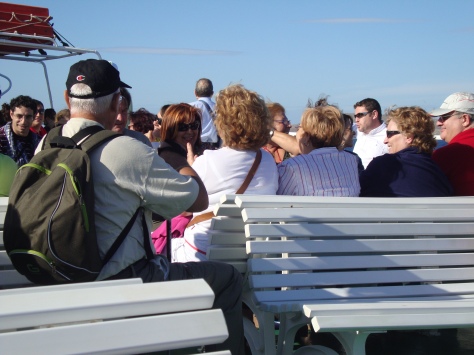
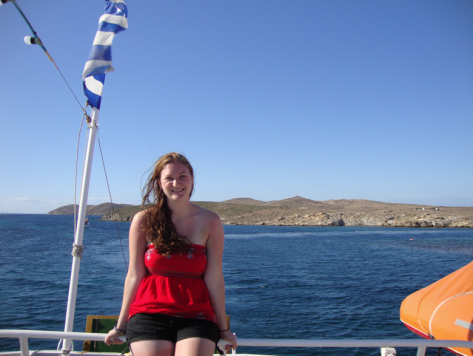
One of the frustrating things about going from Mykonos, however, is that if your boat doesn’t fill up to the operator’s liking, it’ll get cancelled and you’ll be forced to take the next boat an hour later. Only three boats head from Mykonos per day, so when this happened to me, I’d admittedly panicked a bit. I’d had to be back on Mykonos by noon or so to catch a ferry to Athens, which left me with only an hour to see as much of Delos as possible. Fortunately, my legs have never failed me thus far when I’ve had a time crunch. (Knock on wood.)
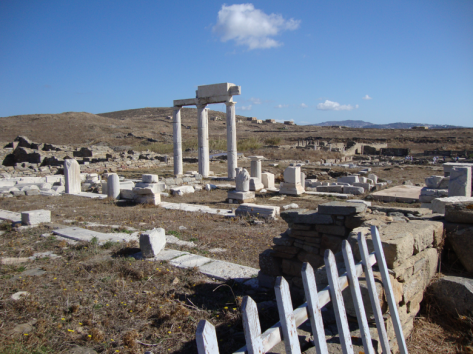
For mythology nerds, Delos is heaven. Archaeological sites cover almost the entire island, and there’s plenty to marvel at, despite the fact that most of the structures are now little more than ruins. You’ll find a Doric column here and a pitted statue there, but even the remains are impressive.


Being the birthplace of Apollo, it’s no surprise that there aren’t one or two but three temples dedicated to the god of sun and music. (Somehow Artemis sort of got the shaft, though…) One of the most famous sites of Delos is the Lion Terrace, which is bedecked with – you guessed it – statues of lions. Time has definitely taken its toll on the marble beasts, which were originally gifts from Naxos. Additionally, there’s an obligatory museum filled with artifacts, a huge amphitheatre that can seat more than three thousand people, and some gorgeous mosaics.




As impressive as I found these reminders of centuries gone past, my favorite memory of Delos is definitely the view I got when I climbed Kynthos, the tallest point of the island. Despite the fact that I went to Greece in late October, the weather was still beastly hot. The Cyclades are notorious for being extremely windy, but there was no breeze that day to provide a bit of relief from the sun. I got the sunburn to prove it, too. The next time I go to Delos, I’ll definitely be bringing a hat.
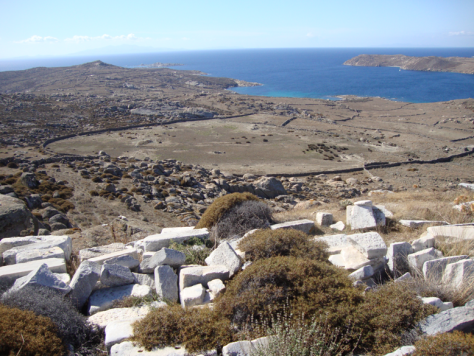


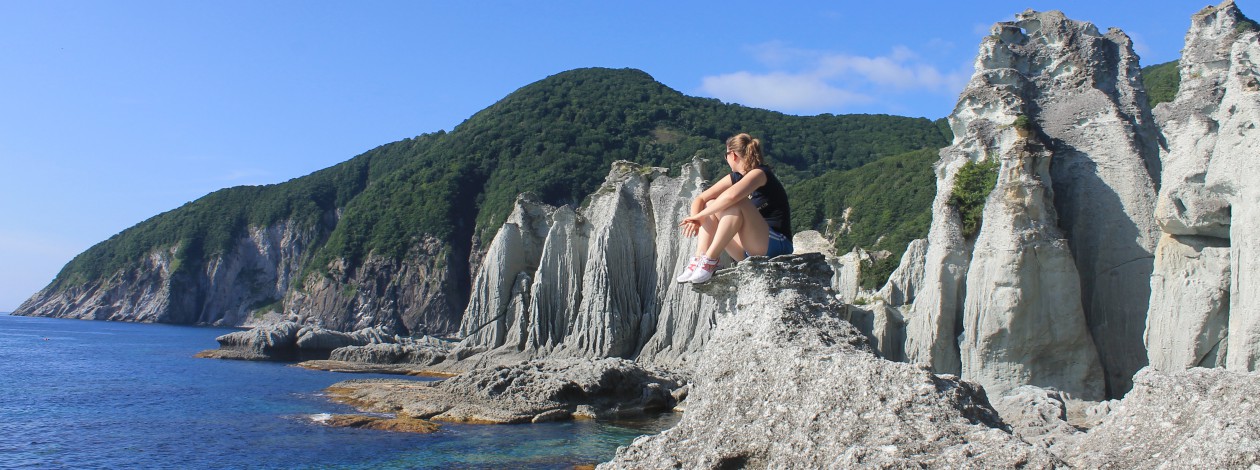


just beautiful :)!!
LikeLike